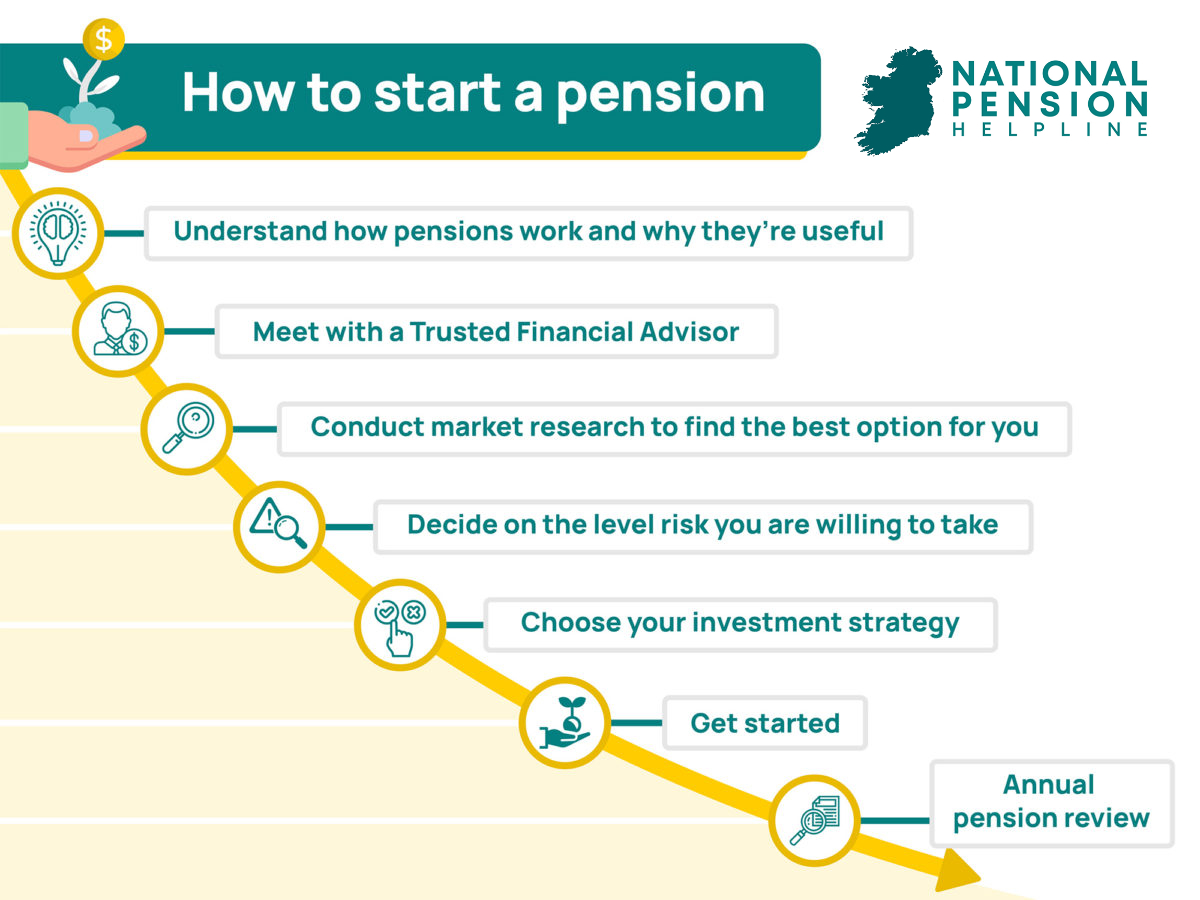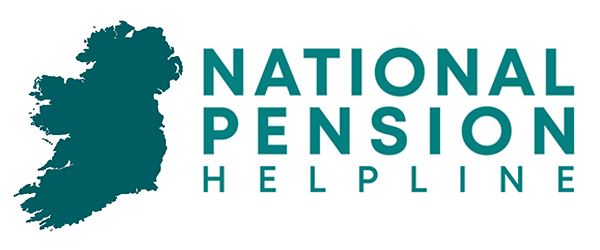Table of Contents
Overview of Company pensions
What are the benefits of a Company pension scheme?
Offering a company pension scheme is a solid and reliable way for a company owner to invest in its own and its employee’s future. From the employee’s perspective it is a signal that their role in your company matters and that you care about their careers and their livelihood. From the employer’s perspective it is a tangible and bankable incentive to help retain talent while also building trust among their employees.
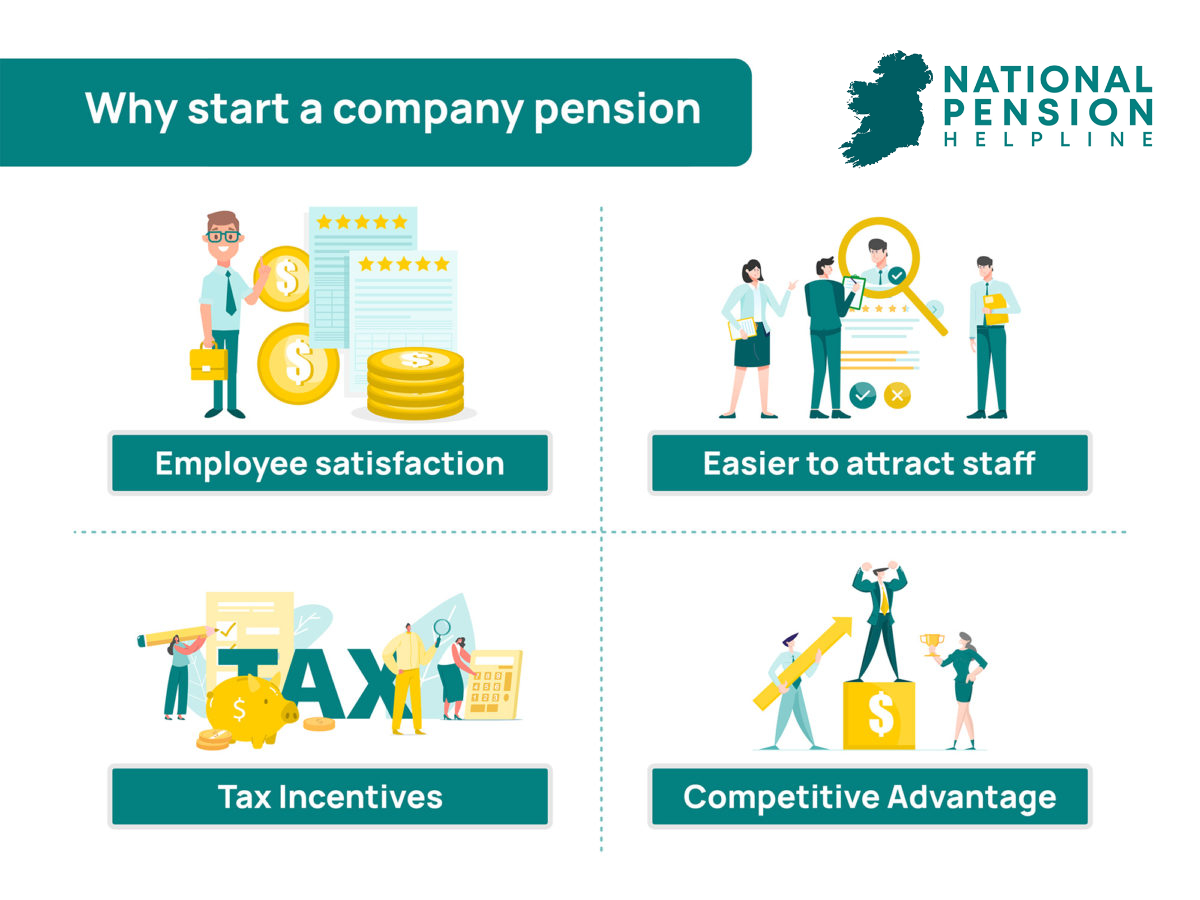
Employee satisfaction
Creating a confident and satisfied workforce is essential in the modern working world. While employees have never been more free to move from job to job, the employer’s task in retaining them has become more difficult. Providing a company pension plan is a concrete effort on the part of the employer to help the employee feel satisfied in their role and recognise that their contribution to the company goes further than simply creating profits. They are investing in themselves.
Easier to attract employees
Operating a company pension scheme will help in attracting employees. New talent may not have an existing pension plan so the provision of one is a definite incentive when considering whether to work for a company. Another new employee may be considering transferring from a role elsewhere that already has a pension plan. It will be difficult for them to make the decision to transfer to your company if you do not offer a similar plan. They would be taking a step down in tangible benefits to move to your company. Therefore the provision of a company pension plan is seen by many applicants to be a necessary job requirement.
Tax incentives
Employers offering a company pension scheme can receive tax relief on contributions made into a scheme. The amount of relief is determined by the type of scheme that you enter into. The company’s contributions are completely tax deductible for corporation tax purposes.
Competitive advantage
Offering a company pension plan is a clear competitive advantage that employees recognise and value. For employees, it separates companies which appear committed to their employees from those who merely say they are. A company which offers a company pension has made a financial commitment to their employees that can be measured. It is a clear signal to an employee that the company values them and their future.
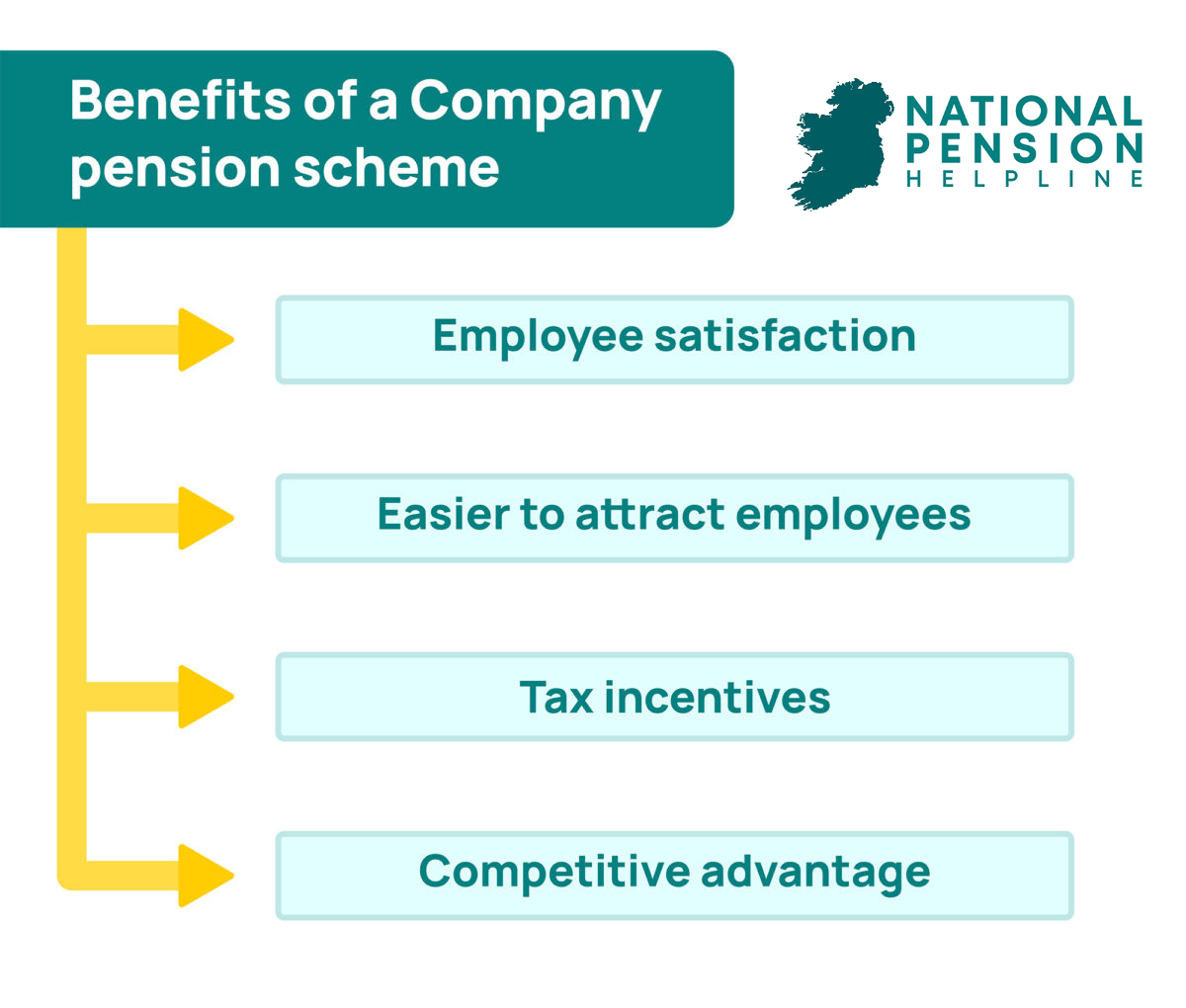
Do I have to have a company pension for my business?
It is not a mandatory requirement in Ireland for companies to provide a pension plan to employees. However, if a company does not offer a plan then it must provide access to a standard Personal Retirement Savings Account (PRSA) instead. They need to notify employees that they have the right to access a PRSA and to provide assistance in doing so, including time to access one from a provider and to deduct the payments from payroll and record these payments and include them in pay slip details.
What happens to a pension when an employee leaves my company?
If an employee leaves your company to take a job elsewhere or to leave the workforce for a period their pension remains in situ until such time as they decide what to do with it. Initially, their status in the scheme will change from being an active member to a deferred member. At this point they are free to transfer their pension to their new employer’s pension scheme or transfer it into another pension vehicle.
They can also leave it in the existing pension scheme but as their former employer your pension trust will ultimately prefer for them to transfer it out. Their pension will not grow while it is in the existing scheme as they will not be making any contributions to it. It is advisable to transfer it. If they are unsure of what they should do with the value of their pension pot when changing jobs or leaving your employment they should seek advice from an independent pension advisor.
Get to know Company Pension schemes
What is a company pension scheme?
A company pension scheme is sometimes known as an occupational pension scheme. It is created and managed by an employer on behalf of its employees. It is designed to maximize the benefits of an employee’s salary by allowing them to invest in their future income after retirement. Members of the scheme can rely on this income after retirement in addition to the State pension. It comes with tax benefits to the employer and the employee which the Government facilities because it encourages people to invest in their own future.
There are two types of pension that a company can offer:
Contributory and non-contributory pensions.
A contributory pension is one in which both the employee and the employer contributes payments each month to grow the employee’s pension pot.
A non-contributory pension is one that is also setup by the company but the company does not contribute a portion of the payments that go into it. All the payments are made by the employee alone.
Defined benefit or defined contribution?
As well as deciding whether a company wants to offer a contributory or a non-contributory pension you will also have to choose the company pension type. Will it be Defined Benefit or defined Contribution?
What is a DB Pension?
A Defined Benefit pension is one in which the future payments received by the employee are calculated and stated at the outset. They can be calculated in advance by measuring the number of years in service and the salary level of the employee.
What is a DC Pension
A Defined Contribution, on the other hand, does not have a fixed amount that it will pay on retirement. The value of the pension is dependent on the payments made by the employee and the company as well as the level of investment risk that the pension scheme operates at.
What is a Hybrid pension
A third option that is available to companies is a Hybrid scheme which contains elements of both contributory and non-contributory pension schemes.
Choosing which route to follow is a complicated endeavour and will benefit greatly from expert advice. Ensure you have all of the relevant information for your company before you choose the pension route to go down. To achieve this, connect with a pension adviser today.
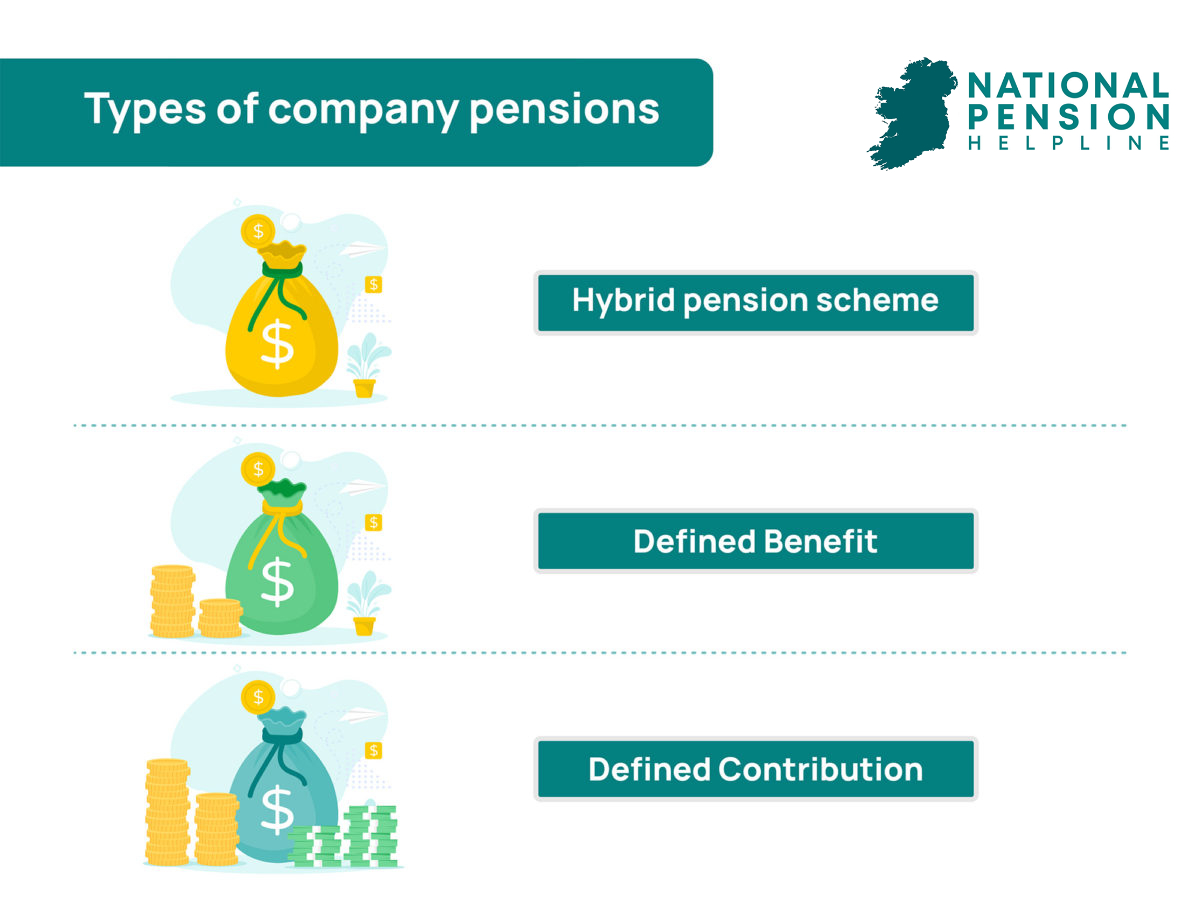
Can employees cash in their company pension?
There are strict rules as to when and how an employee can cash in their company pension. The tax relief that a pension pot receives is based on incentivising you to save for your retirement. Therefore, except under exceptional circumstances, an employee cannot cash in their pension early. Generally scheme members cannot cash in a pension before the age of 60 but there are some circumstances when they can cash in their pension from the age of 50.
How do I start a company pension scheme?
Setting up a new company pension scheme is extremely complicated but very beneficial to you, your company and your employees. It is more than worth the time and effort it takes to get it right. Don’t imagine that this is something you have to do alone. There is plenty of expert advice to help you follow the correct path. Your very first step should be to contact a pensions advisor who can provide independent advice on how you should begin.
Who manages the company pension scheme?
The most common structure for a company pension scheme is to establish a Trust. This is an organizational structure that allows a scheme to access the largest amount of tax relief as well as ensuring that the assets of the pension scheme separate from the company itself.
A trustee can be an individual or a company that provides pension services that act separately to the company and manage and hold the assets of the scheme. Trustees are required to ensure that the scheme is run responsibly and follows the rules that are created for it at the setup stage. Individual trustees are legally obliged to understand the pension landscape and the rules, laws and regulations pertaining to it.
The day to day running of the scheme is normally managed by an insurance company or broker, not by the trustees. The trustees operate an oversight role and are an informed third party that can communicate and elaborate on the scheme for its members as it evolves.
Who can be in a company pension scheme?
At any time in its lifespan, a company pension scheme will have three types of members within it: active members, deferred members and pensioners.
What is an active member of a pension scheme?
An active member is an employee who is currently working for the company and making regular contributions. They are still in service.
What is a Deferred Member?
A Deferred Member is an employee who has left the company but is still a member of the scheme by default. They have not made any decision about leaving the scheme but they are not currently paying into it. They retain value in the scheme due to the payments they have already made during their time with the company and so the scheme is responsible for those payments even though they may have left the company.
What is a Pensioner?
Pensioners are those members of the scheme who have successfully retired and are now in receipt of payments from the pension scheme under its rules.
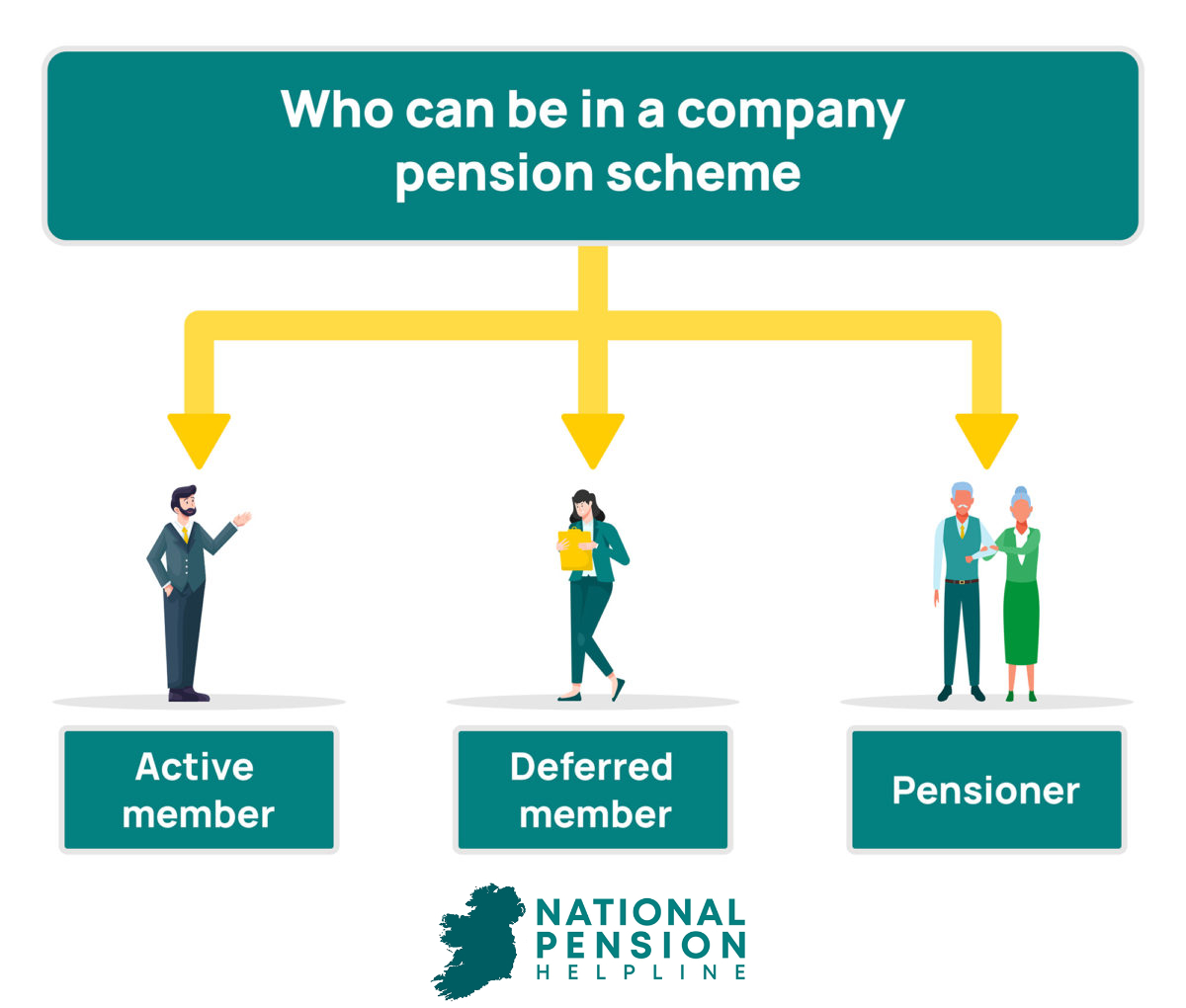
Does setting up a company pension scheme give me tax breaks?
Yes, there are significant tax breaks available for companies that offer a pension scheme to their employees. These include tax relief on all contributions paid by the employer that can be offset against corporation tax. There are also tax breaks around benefit in kind categories related to the payments your employees make. For further breakdown on these benefits and for all advice around setting up a company pension contact a pension advisor.
Can employees make additional voluntary contributions?
What is an AVC?
Additional Voluntary Contributions are payments that an employee can make in addition to their regular payments into their pension pot. Normally, an employee makes a monthly payment into their pension based on a percentage of their salary. If they choose to, under some schemes, they can deposit additional amounts of money on a voluntary basis to increase their pension pot overall. This is beneficial as it can avail of tax breaks which are more valuable than if this sum of money was simply sitting in a bank account. For this reason, the option to make additional voluntary contributions is attractive to anyone considering joining your company.

The scheme rules at outset need to be designed to allow for AVCs. This is something that your pension advisor can discuss with you at setup. It’s an important and valuable asset type for an employee so is well worth considering from the employer’s perspective. Your ultimate pension will be based on all contributions paid into the pension plus the value earned as investment by those payments.
Can employees make AVCs?
Yes, in general employees can make additional voluntary contributions to your scheme as long as it is set out in the rules that you can do so. You need to establish this important rule at the set up stage of your scheme. They are allowed to choose the rate at which they can contribute and AVCs are applicable for public and private sector pension schemes.
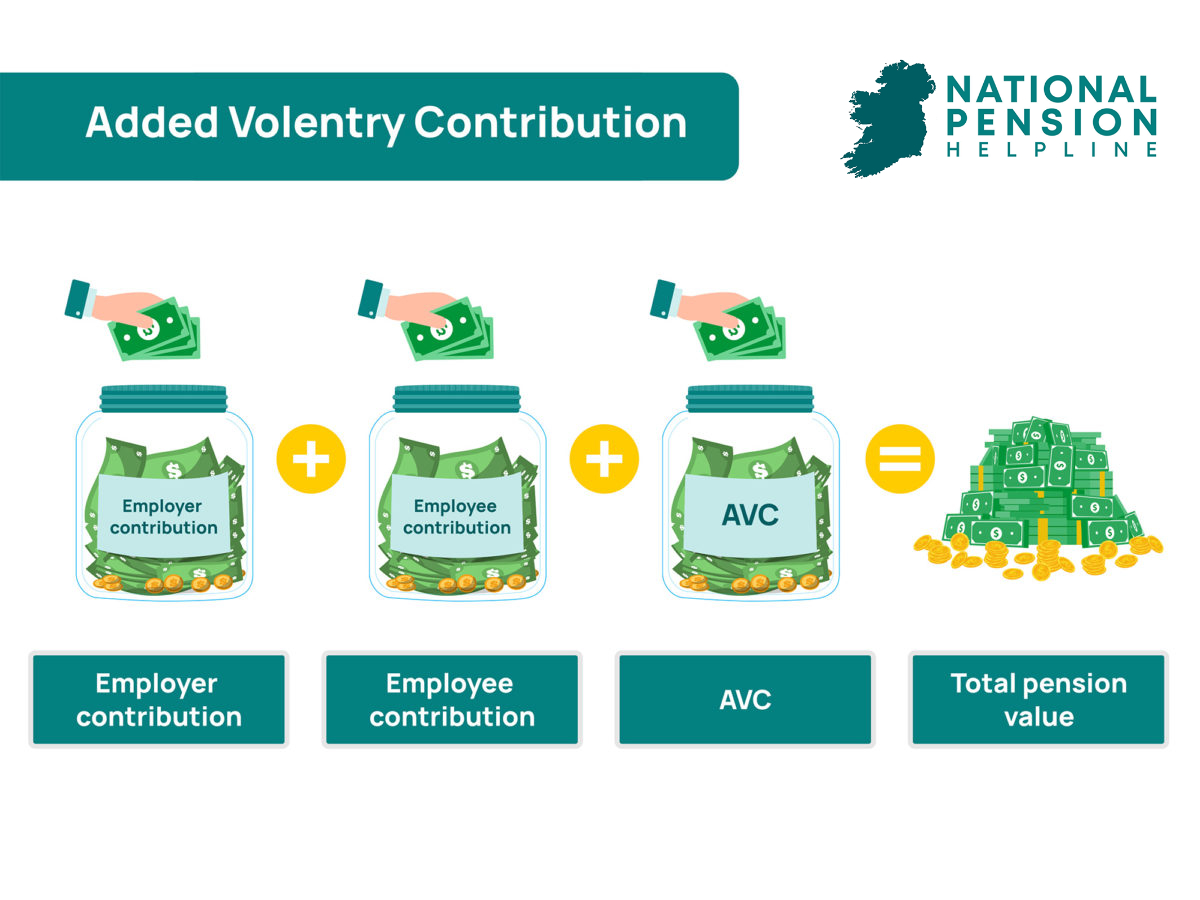
Is there a max or min AVC?
There are maximum amounts set for AVCs and these are a percentage of salary linked to age. So, for example, anyone under 30 can make a maximum of 15% of their salary as an additional voluntary contribution. At 50 years of age this goes up to 30% of salary. By 60 years of age that percentage rate increases to 40% of total salary per year.
Looking after your employees
What is group risk cover?
The main reason a company engages with a pension scheme for their employees is to provide a benefit for them that is more than their salary. The company wants to help the employee plan for the future, create a pension pot and receive value form their years in service when they have retired. It allows employees to maintain a certain standard of living that they have enjoyed as employees. There are additional ways to protect and support your employees that can run in tandem with your pension scheme and should be considered.
They include:
- Group Life Insurance
- Group Income Protection
- Group Critical Illness Cover
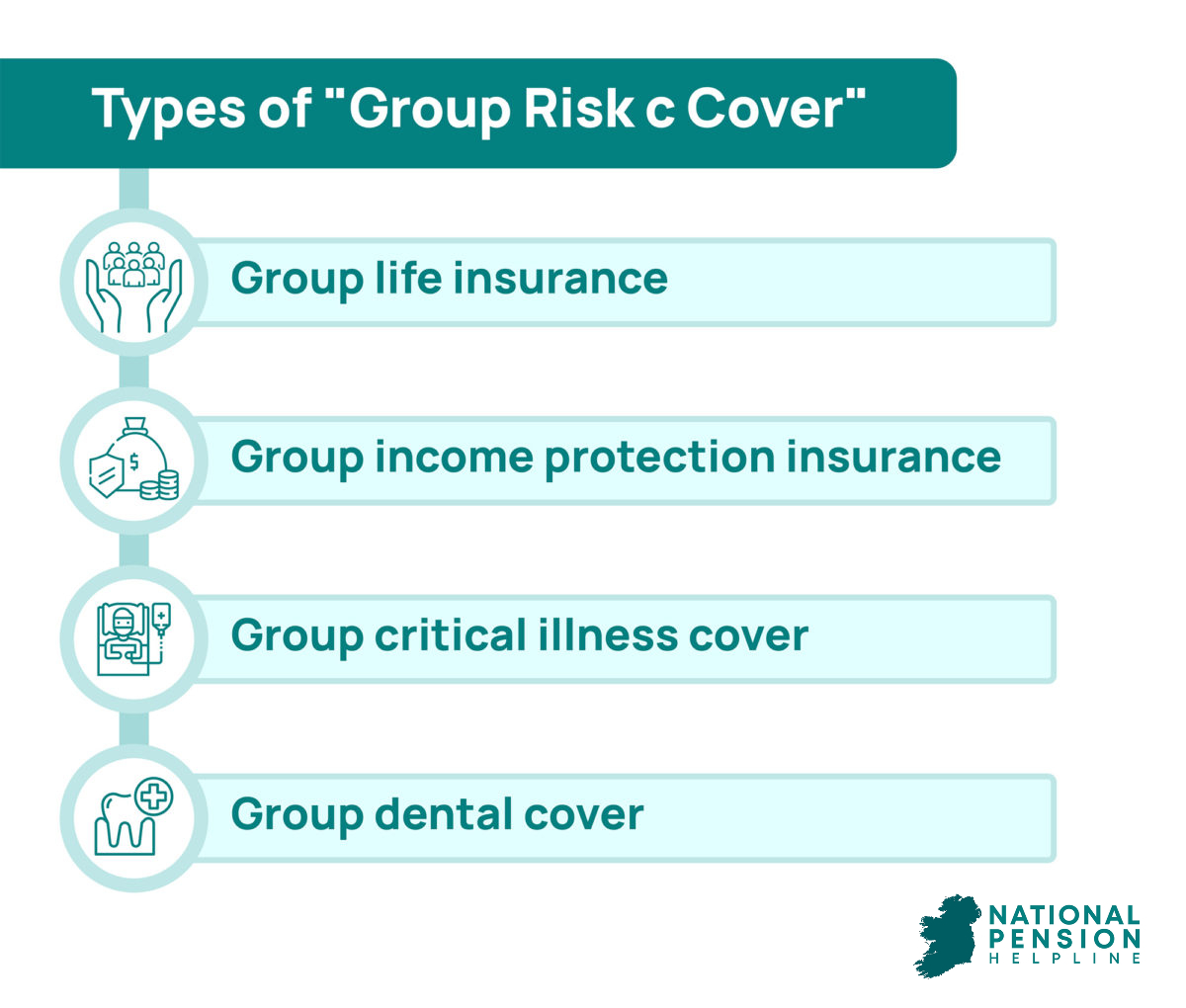
Group Life Insurance
Group Life insurance is a programme of life insurance that a company can take on to ensure that should an employee die in service there will be a lump sum payment for their beneficiaries. Taken on as a group scheme the employer can ensure that all employees have the security of life insurance.
Group Income protection
Group income protection is a support put in place by a company to make sure that should a person become ill or otherwise unable to do their job for a period that their salary can still be paid. It is usually activated at a point when there is a sustained period of time when the employee cannot work.
Group Critical illness cover
Group critical illness cover refers to an insurance policy that can be taken out at the group level to pay a lump sum to an employee who has received a critical illness diagnosis.
Looking to review or start my company pension?
Reviewing your company pension scheme is very important as the pension landscape changes regularly. The insurance company or broker who helps you manage it should review the scheme on a regular basis. If you are unsure of your scheme’s status and whether it would benefit from a review then contact an independent pension advisor.
